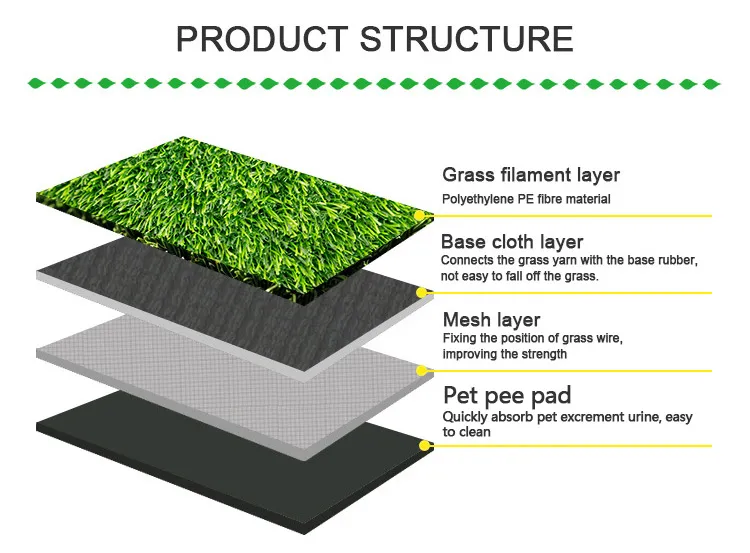
- Afrikaans
- Arabic
- Belarusian
- Bengali
- Czech
- Danish
- Dutch
- English
- Esperanto
- Estonian
- Finnish
- French
- German
- Greek
- Hindi
- Hungarian
- Icelandic
- Indonesian
- irish
- Italian
- Japanese
- kazakh
- Rwandese
- Korean
- Kyrgyz
- Lao
- Latin
- Latvian
- Malay
- Mongolian
- Myanmar
- Norwegian
- Persian
- Polish
- Portuguese
- Romanian
- Russian
- Serbian
- Spanish
- Swedish
- Tagalog
- Tajik
- Thai
- Turkish
- Turkmen
- Ukrainian
- Urdu
- Uighur
- Uzbek
- Vietnamese
laying artificial grass on soil on a slope
Nov . 15, 2024 18:24 Back to list
Laying Artificial Grass on Soil on a Slope
Laying artificial grass on a sloped area can enhance the visual appeal of your landscape while providing a practical solution for difficult terrain. With the right preparation and techniques, you can successfully install synthetic turf on a slope, creating a beautiful and functional outdoor space. This article will guide you through the essential steps involved in this process.
Understanding the Benefits
Artificial grass has gained popularity for a variety of reasons. It requires low maintenance, is durable, and provides a lush, green appearance year-round. Installing it on a slope can help prevent soil erosion and provide a stable surface for activities such as lounging, playing, or even landscaping projects. Moreover, synthetic grass does not need sunlight, making it ideal for shaded or partially shaded areas.
Preparing the Site
The first step in laying artificial grass on a slope is proper site preparation. Begin by assessing your slope's steepness and its drainage capabilities. Ensure there are no overhanging branches or obstacles that could disrupt the installation. The area should also be cleared of any debris, rocks, and existing grass.
Next, grade the slope to create a smooth, even surface. It's important to avoid any sharp drop-offs or uneven spots that could cause water pooling. Using a rake, level the soil as much as possible, ensuring that there is a slight slope for drainage purposes. If the slope is particularly steep, consider installing a retaining wall or another type of erosion control to enhance stability before laying the turf.
Choosing the Right Materials
Selecting the correct materials is crucial for a successful installation. Choose high-quality artificial grass designed for your climate and intended use. The pile height, color, and texture should replicate natural grass to achieve a realistic appearance.
Additionally, ensure you have the right infill material. Infill helps to anchor the grass and provides cushioning, making it feel more like real grass underfoot. Common infill materials include sand, rubber, or a combination of both. Keep in mind that the choice of infill may depend on the slope's steepness and how the area will be used.
Installation Process
Once you have prepared the site and gathered your materials, you can begin the installation process. Here is a step-by-step guide to help you through it
laying artificial grass on soil on a slope

1. Lay the Base Material Spread a layer of crushed stone or gravel across the slope. This will aid drainage and prevent water from pooling under your artificial grass. Compact the base material to ensure it's stable.
2. Add the Infill If using an infill material, distribute it evenly across the compacted base. This step may be skipped if you’re opting for a non-infill turf but is often recommended for added stability.
3. Roll Out the Turf Unroll the artificial grass on the prepared slope, ensuring it lays flat and follows the contour of the slope. If you encounter any bumps or wrinkles, smooth them out to maintain an even surface.
4. Cut and Shape Use a utility knife to cut the grass along edges and difficult areas. Ensure that seams are aligned well, and the grass fits snugly along borders, edges, and around obstacles.
5. Secure the Turf Use landscape staples or special turf adhesives to secure the artificial grass to the soil. Place staples every few feet along seams and edges to prevent shifting and maintain an even surface.
6. Apply Additional Infill If your grass needs it, add infill material to the surface and spread it evenly using a broom. This will help the grass blades stand upright and provide additional cushioning.
7. Final Touches Brush the grass blades with a broom to lift them and create a natural look. Inspect the installation for any loose areas that need securing.
Maintenance and Care
While artificial grass requires less maintenance than natural grass, some care is still needed. Regularly remove debris like leaves and twigs, and rinse the surface as necessary. If you notice any areas that have settled or shifted, make adjustments accordingly.
Conclusion
Laying artificial grass on a slope can be a rewarding endeavor that transforms your outdoor space. By following the proper steps, from site preparation to installation and maintenance, you can enjoy the beauty and functionality of synthetic turf for years to come. Whether it's for play, relaxation, or environmental control, artificial grass on a slope offers a stylish and practical solution for any backyard or commercial landscape.
-
The Benefits of Artificial Turf for Indoors
NewsJul.15,2025
-
How Artificial Grass Suppliers Ensure Quality Products
NewsJul.15,2025
-
Artificial Grass and Pets: A Space for Relaxation
NewsJul.08,2025
-
Balcony & Outdoor Decoration with Artificial Grass
NewsJul.08,2025
-
Best Indoor Artificial Grass for Home
NewsJul.07,2025
-
Best Pet Turf for Dogs: Safe & Durable Artificial Grass Options
NewsJul.07,2025
Products categories









